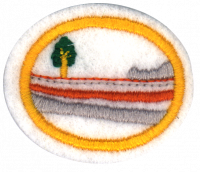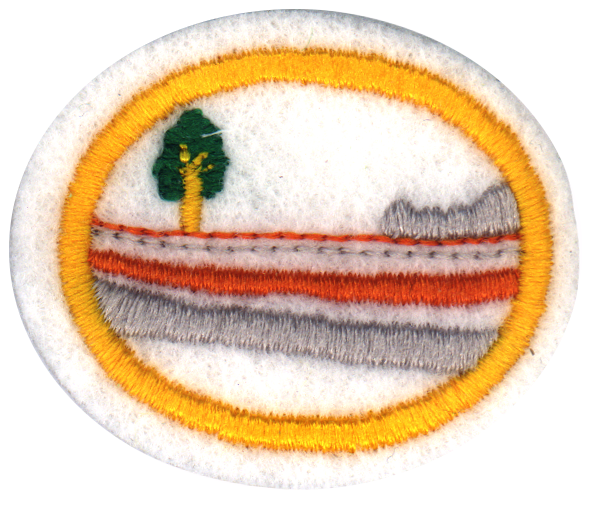Difference between revisions of "AY Honors/Soils/Answer Key/es"
(Created page with "</noinclude><noinclude>") |
(Created page with "{{clear}}") |
||
| Line 77: | Line 77: | ||
{{CloseReq}} <!-- 5 --> | {{CloseReq}} <!-- 5 --> | ||
{{ansreq|page={{#titleparts:{{PAGENAME}}|2|1}}|num=6}} | {{ansreq|page={{#titleparts:{{PAGENAME}}|2|1}}|num=6}} | ||
| − | <noinclude> | + | <noinclude></noinclude> |
| − | </noinclude> | + | <!-- 6. Discutir las diferencias entre las tres siguientes clases de suelo: --> |
| − | <!-- 6. | + | <noinclude></noinclude> |
| − | <noinclude | ||
| − | |||
{{ansreq|page={{#titleparts:{{PAGENAME}}|2|1}}|num=6a}} | {{ansreq|page={{#titleparts:{{PAGENAME}}|2|1}}|num=6a}} | ||
| − | <noinclude> | + | <noinclude></noinclude> |
| − | </noinclude | ||
| − | |||
| − | |||
<noinclude></noinclude> | <noinclude></noinclude> | ||
| Line 145: | Line 140: | ||
{{clear}} | {{clear}} | ||
| − | + | {{clear}} | |
| − | |||
| − | |||
| − | + | {{clear}} | |
| − | |||
| − | |||
| − | + | {{clear}} | |
| − | |||
| − | |||
| − | |||
| − | + | <noinclude></noinclude> | |
| − | <noinclude | ||
| − | |||
{{CloseReq}} <!-- 8 --> | {{CloseReq}} <!-- 8 --> | ||
| − | <noinclude> | + | <noinclude></noinclude> |
| − | </noinclude> | + | ==Referencias== |
| − | == | + | [[Category:Adventist Youth Honors Answer Book/es]] |
| − | + | <noinclude></noinclude> | |
| − | |||
| − | |||
| − | |||
| − | |||
| − | [[Category:Adventist Youth Honors Answer Book/ | ||
| − | <noinclude | ||
| − | |||
{{CloseHonorPage}} | {{CloseHonorPage}} | ||
Revision as of 14:02, 23 April 2021
Nivel de destreza
1
Año
2006
Version
21.12.2025
Autoridad de aprobación
Asociación General
1
2
3
4
4a
4b
4c
4d
4e
4f
4g
4h
4i
4j
4k
4l
5
6
6a
6b
Brown earths are mostly located between 30° and 55° north of the Equator. The largest expanses cover western and central Europe, large areas of western and trans-Uralian Russia, the east coast of America and eastern Asia. Here, areas of brown earth soil types are found particularly in Japan, the Koreas, China, eastern Australia and New Zealand.
6c
Oxisols are an order in USDA soil taxonomy, best known for their occurrence in tropical rain forest, 15-25 degrees north and south of the Equator. Some oxisols have been previously classified as laterite soils.
7
Find a place where you have permission to dig a 2-foot deep hole. In the United States, call before you dig. Digger's Hotline, One-call or Miss Utility are services that allow construction workers to contact utility companies, who will then denote where underground utilities are located via color-coding those locations. As required by law and assigned by the FCC, the 8-1-1 telephone number will soon be used for this purpose across the United States.
8
Listed below are a few types of soil you might collect. For a more complete listing of soil types, see the Types of soil category in Wikipedia.
Sandy soil
Sandy soil consists of relatively large particles (sand). It has a gritty texture. Sandy soil, if mixed well with organic matter, is a good medium for growing plants as long as it is kept moist. Because the particles are so large, water and air easily penetrate the soil and reach the roots of plants. However, this same quality allows the water to drain away almost immediately (which is why it must be kept moist if used for agriculture).
Silty soil
Silty soil is like sandy soil except that it contains finer particles and more nutrients. It has a darker color as well. Silty soil is one of the best soils for agriculture because like sandy soil, it allows water and air to penetrate to the roots, but unlike sandy soil, it hold the water longer.


